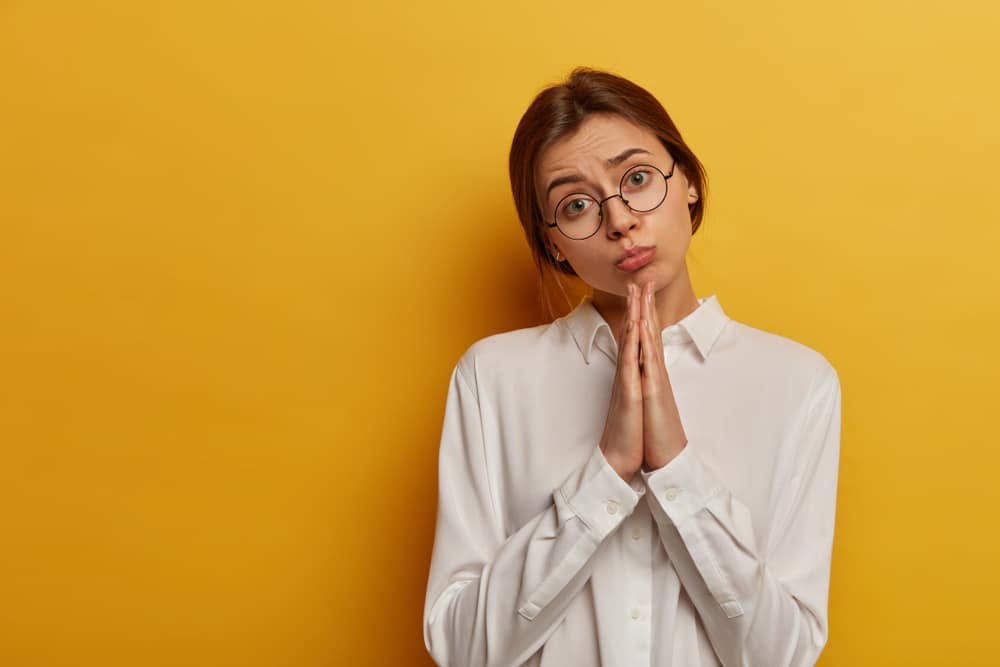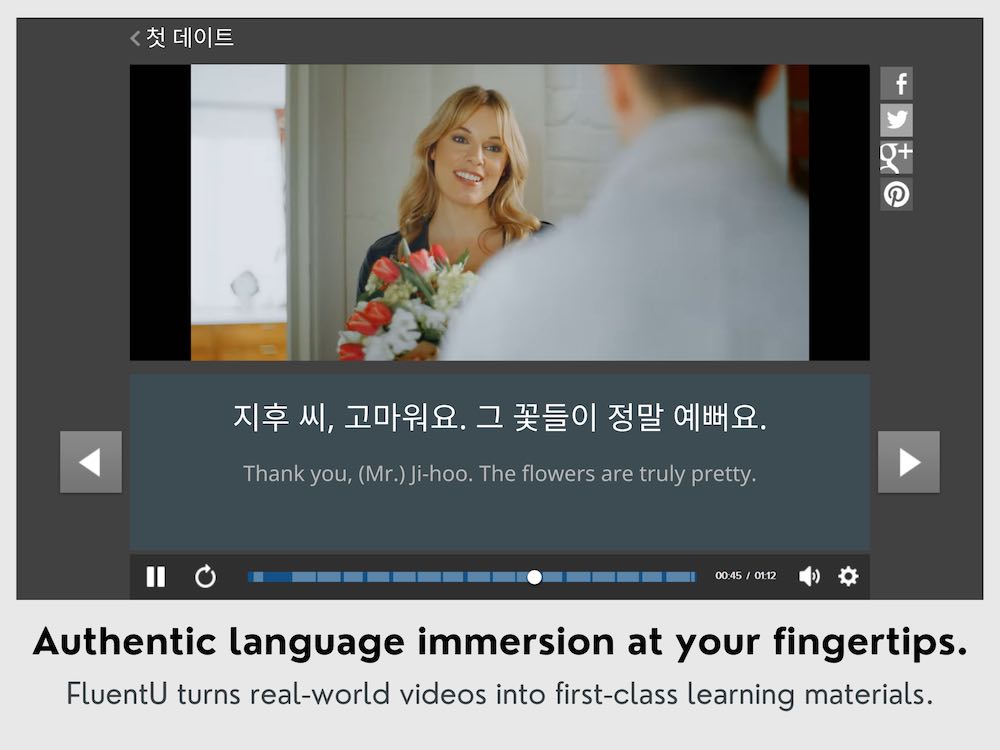
How to Say Please in Korean (in Different Formalities)
If you’re learning Korean, knowing how to say “please” is essential. It’s one of the easiest ways to show you’re a nice and well-mannered person, no matter where your language skills are at.
Here are the standard, formal and informal ways to say please in Korean, other polite requests and the importance of using “please” in Korean culture.
Contents
- How to Say Please in Korean
- More Ways to Say Please in Korean
- Importance of “Please” in Korean Culture
- And One More Thing...
Download: This blog post is available as a convenient and portable PDF that you can take anywhere. Click here to get a copy. (Download)
How to Say Please in Korean
As is expected in Korean speech, how you say please depends on how respectful you’d like to be. The process isn’t quite the same as in English, where you can just tack on a “please” anywhere in a sentence.
Standard: ~ (주)세요
Romanization: ~(ju)seyo
Adding a 요 in a phrase will typically indicate that you’re at the very middle-ground of politeness. This makes ~(주)세요 appropriate for when you’re speaking with those you’d like to be relatively respectful towards (such as strangers, customers, colleagues, parents, etc.).
All you have to do is attach ~(주)세요 to the end of the verb—that is, the specific action you’re politely requesting someone do. If you’d like to be a tad bit more cordial at this level, you can attach ~ (주)시겠어요? instead.
The 주 is in parentheses because you may not need it. It comes from the verb 주다 (to give).
This 주 can do two things: It adds a gentleness to your request, and, more expressly, ~주세요 is the expression to use when you want someone to give you something.
If you’re not requesting an object of some sort, then you don’t necessarily need to include 주. Here are two examples:
Formal: ~ (주)십시오
Romanization: ~(ju)shib-shio
While ~(주)세요 is appropriate for most social contexts, sometimes it pays to be even more respectful—or it might even be required.
For example, you may be talking to someone of especially high esteem or rank, such as your boss, your elders, an important business client or a government official.
Honorific language should also be incorporated with ~(주)십시오, to really sell the point that you understand exactly who you’re speaking to.
Considering how formal it is, it’s likely you’ll hear ~(주)십시오 more than you’ll say it. This “please,” as well as ~ 주시기 바랍니다 , is commonly used in public announcements and reports.
용돈을 주십시오. — Please give me allowance money.
책을 읽으십시오. — Please read the book.
Informal: ~ 줘
Romanization: ~jwo
Curt and to the point, this is appropriate for anyone you can be casual with.
You can use it for those your age or younger, including your friends, your siblings or relatives, your boyfriend or girlfriend or anyone else you’re similarly close to.
줘 is the informal conjugation of the 주다 verb, but it can also be used for actions that don’t involve giving.
In some contexts, if said by itself, 줘 can come off as rude and demanding. In such a case, it can be translated more as “hand it over” rather than with any real suggestion of “please.”
Arguably, you may not even need to add 줘 if you’d like your buddy to do something, but it doesn’t hurt!
사탕 줘. — Give me candy (please).
보여 줘. — Show me (please).
More Ways to Say Please in Korean
While ~(주)세요 and its variants are considered the standard ways to say “please,” there are actually several ways you can implore someone to do something in Korean. Due to the specific implications attached to each, it’s important to consider the context before choosing which one to use.
All of the expressions below should be next to or close to the requested action verb.
| Phrase | Meaning | Example Sentence |
|---|---|---|
| 제발 | please, seriously (carries a desperate, pleading note) | 제발 그러지 마세요. (Please don’t do that.) |
| 아무쪼록 | please, hopefully | 아무쪼록 건강하세요. (Please stay healthy.) |
| 부디 | please, kindly | 부디 행복하시길 바랄게요 (Please be happy.) |
| 어서 | hurry (works as a polite way to encourage someone to do something without hesitation) | 어서 오십시오. (Hurry/Please come.) |
| 실례가 안 된다면 / 실례가 안 되신다면 | if you don't mind | 실례가 안 된다면 이것 좀 해 줄 수 있나요? (If you don’t mind, can you do this?) |
| 만약 괜찮다면 / 만약 괜찮으시다면 | if it's alright with you | 만약 괜찮으시다면 우리 집으로 오실 수 있을까요? (If it’s alright with you, can you come to our house?) |
Importance of “Please” in Korean Culture
In a country that so highly values etiquette and social rank, you should pretty much always include a “please” of some sort when asking anyone for anything. This is especially the case when interacting with people you aren’t close to or those who aren’t obliged to help you.
In Western society, “please” is often considered something of an optional, “nice to have” word, whereas in Korean culture, “please” is used much more frequently and liberally.
The lack or misuse of a “please” can be swiftly noticed, and while Korean natives may not verbally express their discontent, they may certainly make a mental note and remember the faux pas in successive interactions.
To better understand exactly when to use the different forms of “please” in Korean, consume content like Korean TV shows and movies. These will allow you to see real native speakers using the appropriate word in context.
Additionally, a program like FluentU provides Korean content alongside learning tools like expert-vetted subtitles and a contextual dictionary to ensure you understand what you watch.
FluentU takes authentic videos—like music videos, movie trailers, news and inspiring talks—and turns them into personalized language learning lessons.
You can try FluentU for free for 2 weeks. Check out the website or download the iOS app or Android app.
P.S. Click here to take advantage of our current sale! (Expires at the end of this month.)
Watching authentic Korean videos will help you learn and remember how to say please in Korean when you want to use it yourself.
Learning the appropriate contexts for the different forms of this courteous request also means that native speakers will see you as the well-mannered learner you are!
It’s easy and doesn’t cost anything to be polite and say “please,” so make it a frequent addition to anything you say in Korean!
Download: This blog post is available as a convenient and portable PDF that you can take anywhere. Click here to get a copy. (Download)
And One More Thing...
If you enjoyed this post, you're already halfway to having the time of your life learning Korean with FluentU!
FluentU makes it possible to learn with K-pop videos, funny commercials, entertaining web series and more. Just a quick look will give you an idea of the variety of FluentU videos on offer:

FluentU really takes the grunt work out of learning languages, leaving you with nothing but engaging, effective and efficient learning. It's already hand-picked the best videos for you (which are organized by level and topic), so all you have to do is simply choose any video that strikes your fancy to get started.
Each word in the interactive captions comes with a definition, audio, image, example sentences and more.

Access a complete interactive transcript of every video under the Dialogue tab, and easily review words and phrases from the video under Vocab.

You can use FluentU’s unique Quiz Mode to learn the vocabulary and phrases from the video through fun questions.

FluentU keeps track of what you're learning, and tells you exactly when it's time for review, giving you a 100% personalized experience.
Review sessions use video context to help embed the words in your memory.
Start using the FluentU website on your computer or tablet or, better yet, download the FluentU app from the iTunes or Google Play store. Click here to take advantage of our current sale! (Expires at the end of this month.)



